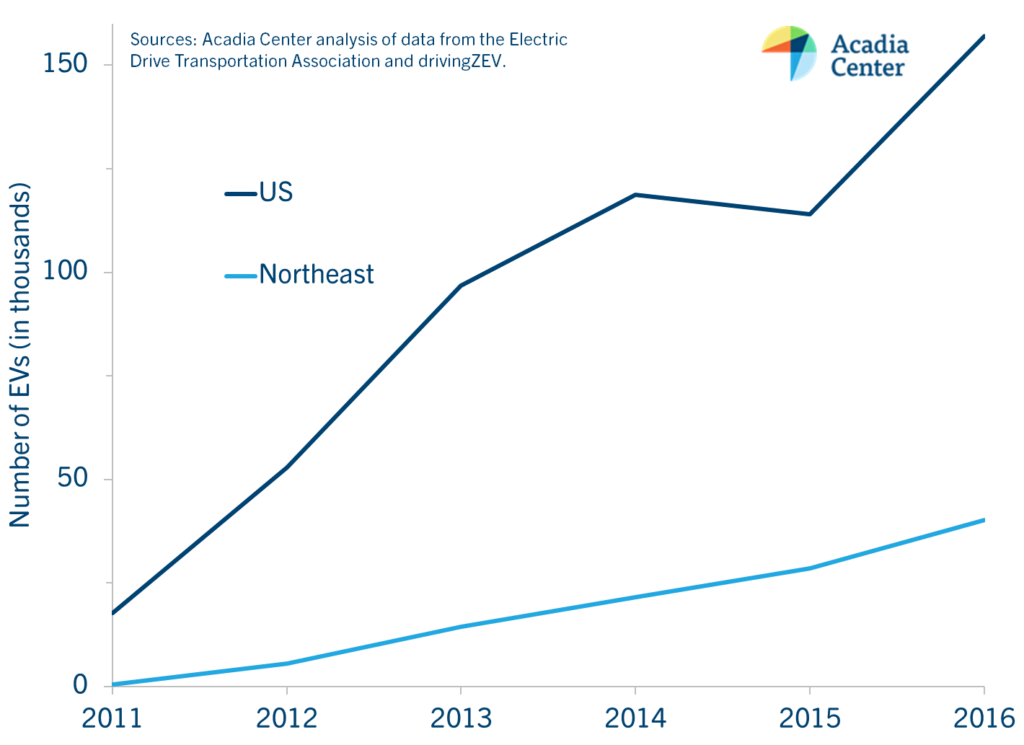New Reports Show Electric Vehicle Market Is Taking Hold
Confidence in electric vehicles (EVs) is growing. Several recent announcements demonstrate that many industries are convinced EVs will play a major role in the future of personal vehicles. Bloomberg New Energy Finance (BNEF) recently forecasted that EVs will make up about 58% of vehicle sales in the U.S. by 2040. This month, Volvo committed to producing exclusively EVs and hybrids by 2019. And even OPEC, the representative body of oil producing nations, has begun to predict a significant impact from EVs—Bloomberg Technology just reported that the oil group quintupled its 2040 EV forecast from last year.
These updated EV predictions are largely driven by rapidly declining battery costs, which in turn drive down the cost of these clean vehicles. BNEF’s forecast shows that battery prices have dropped by 73% since 2010 to about $200/kWh, and they predict this trend will continue. These estimates may even be conservative for some manufacturers, as they are based on average battery prices. Tesla announced in 2016 that they were already below the $200/kWh threshold, and they expect further cost reductions from large-scale production at their Gigafactory. With these battery cost predictions, BNEF forecasted that the cost of manufacturing EVs would match conventional vehicle costs by 2025.
EVs already have lower lifetime costs than conventional vehicles, and consumers are catching on to these benefits. In the U.S., EVs sales in the first six months of 2017 have increased about 35% compared to the same period last year. In the Northeast, which comprises about 25% of the EV market, the annual growth rate of EV sales has been about 40% since 2013. Acadia Center’s EnergyVision 2030 highlights the current fuel cost savings and emissions benefits of EVs in the Northeast region. The lower EV purchase prices predicted from decreasing battery prices will further increase consumer savings.
New EV Sales in the U.S. and the Northeast, 2011-20161
But batteries are not the only driver of EV costs. BNEF also highlights the importance of supportive policies in the next six to eight years to maintain the momentum around EVs. Some existing policies are facing uncertainty because of actions by the Trump administration. Without them, market dynamics for EVs could change, resulting in slower cost reductions and delayed adoption. In the wake of Federal uncertainty, states should continue to act in strong support of EVs. Acadia Center’s Charging Up report—coauthored with Sierra Club and Conservation Law Foundation—outlines policies that states in the Northeast can adopt to show they are ready for and supportive of the growing EV market.
1 Data for the Northeast includes the New England states and New York. Data from the Electric Drive Transportation Association and drivingZEV.



















